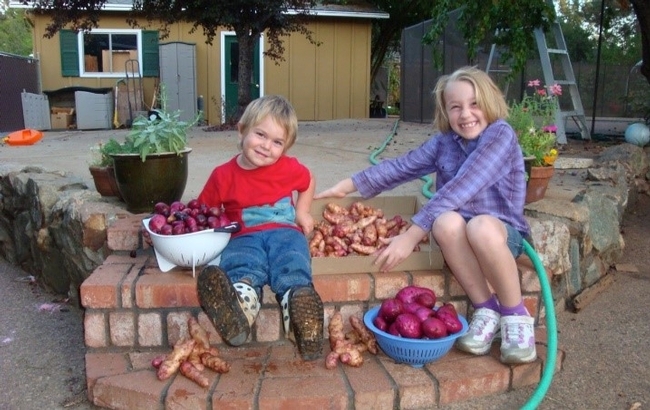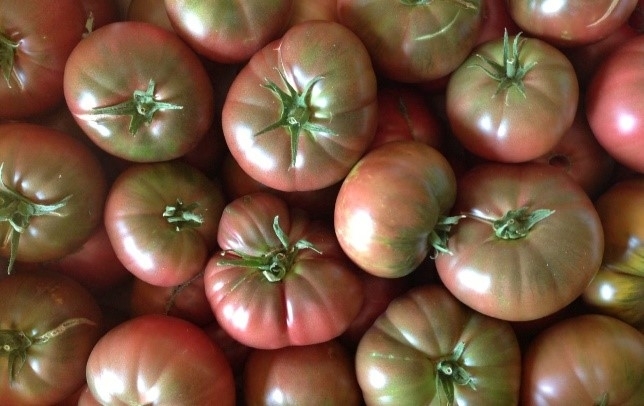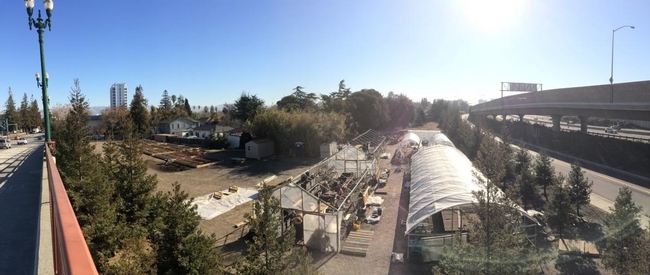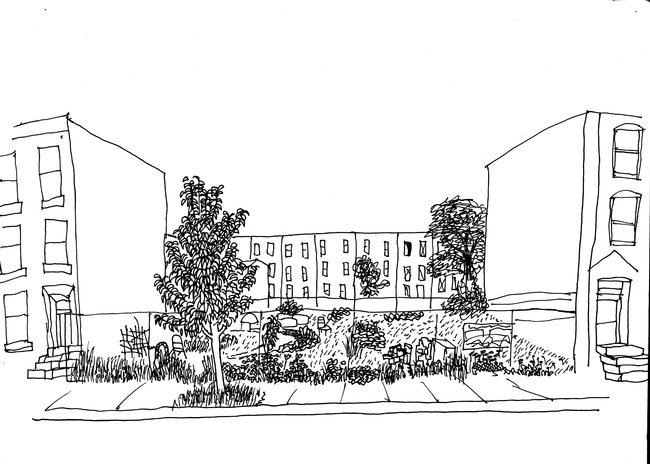- Author: Aleta Barrett
- County: UCCE Placer/Nevada

If I had it all to do over again, what would I do differently?
Practice: To start, I would educate myself by doing – work or intern on a profitable farm for at least one season. I can't tell you how many hours I wasted on inefficient harvesting when an experienced farmer could have trained me to do it a better, faster way.
Education: While I was learning how to do the hands-on work, I would take classes – farm business, farm management, farm marketing, etc. Taking classes taught by people with experience in the field gives a new farmer the opportunity to ask questions and have access to more information and resources. Farming is a unique business with its own language and challenges. Farm business classes can help a new farmer develop a realistic and informed business plan.
Business Perspective: I would not start with a homesteader perspective like the one I did. I had too many enterprises from the get go – chickens, goats, and 40+ vegetables. For a farm to be financially successful, it needs to be treated as a business, not a hobby.
Business Plan: I would focus more on marketing and financial goals. I would include the word “profit” in my mission statement. My original business plan focused too specifically on land use and crop production, environmental impact, and social involvement.
Banking: I did pretty well in this area. The following tips saved me a lot of stress during a financially dry period:
• Start with a separate farm business checking and personal checking account
• Do not take on debt
• Keep track of everything on some version of accounting software.
Market Research: I would do market research on what to grow. I would takes notes on price and what products were in demand at farmers' markets and other outlets where I intended to sell. I would contact produce managers and farmers' market managers and ask them what they wanted. I would watch market customers to see where they shopped. I would note which products sold out by the end of the market. As it was, I started out growing what I liked to eat – and more! If I had done my market research, I could have wasted less time on crops that were not in demand or were too inexpensive for me to be competitive on pricing.

See Starting Smarter Part 2: Lessons I Learned Along the Way next week to read about Land, Equipment, Labor and more.
Check out the New Farmers and Resources tabs on this website information and some useful information:
Foothill Farming: http://ucanr.edu/sites/placernevadasmallfarms/
- Author: Brent Carvalho, Garden to Table
- Author: Rachel A. Surls
Santa Clara County is among several California counties and cities now considering local implementation of AB 551, the Urban Agriculture Incentive Zone Act, which became state law in 2014. Once enacted at the local level, AB 551 offers a potential tax reduction for land owners who lease their land for urban farms and community gardens. At this point, San Francisco has the only such zone. On February 10th, 2015, the Santa Clara County Board of Supervisors took the first steps toward creating urban agriculture incentive zones. Interested cities within the county would also need to implement the measure.
There's plenty of interest in San Jose, Santa Clara County's largest city, where urban farm advocates hope that implementing AB 551 would allow small-scale urban agriculture to be viable in an urban area where land values are high. Garden to Table is one of the community groups leading the local push for AB551. They hope that improving access to land for urban growers will also enhance options for access to local foods.
Garden to table staff developed a report on the implementation of AB551 that may be of interest to groups in other counties and cities around California (see link below for the full report). They used census track and property tax data, general plan designations, and more to analyze suitability of land for a potential urban agriculture incentive zone. Thanks to support from The Health Trust, Garden to Table is embarking on a second research phase for adopting AB 551 in San Jose and Santa Clara County. Over the next year they hope to build a network of property owners and urban agriculture organizations, and collect data about interest from community members.
Garden to Table Report: Implementing AB551 in San Jose

- Author: Melissa Poulsen, MPH (PhD Candidate, Johns Hopkins Bloomberg School of Public Health)
If you were to start an urban farm in a neighborhood, what would be your first step? Obtaining a lease for the land? Testing for soil contamination? Clearing out the accumulated trash? These are important steps. But an additional step should be considered first—that is, gaining the support of the local community.
Considering the multifaceted benefits of urban agriculture, it may seem counterintuitive that city residents would not welcome an urban farm with open arms. However, the idea of farming in a city (which differs from urban gardening in its emphasis on income-generating agricultural activity) can seem strange—and potentially deleterious—to local residents. We interviewed city residents, neighborhood leaders, and urban farmers to discover the strategies urban farmers use to obtain community support for their projects. Here are some highlights:
If you found this useful, check out this report to see additional recommendations for gaining local support for urban farming (a summary is also available).
Community buy-in for urban farms July2014 Full report
Community buy-in for urban farms July2014 Summary
- Author: Rachel A. Surls
It's National Farmers Market Week! And here in California, we're celebrating and enjoying our 764 farmers markets-more than any other state. Since many of these markets are in cities, they are an option that urban farmers often consider when deciding how best to market their products. Knowing how to get started, though, can be a challenge.
First, farmers should do some research, including visiting local markets to see the displays and gather ideas about what they might sell. It's important to contact market managers to find out if they have space available, what it costs, and talk about what products they are looking for. It's not always easy to get a spot at a farmers market, because the manager is trying to ensure the right mix of farms and products.
The manager also needs farmers who have a consistent harvest and enough volume to sell every week, and this can be challenging for urban farmers, since they are often beginning farmers and typically have very limited growing space. Even so, some market managers are happy to give urban farmers a try, and some even actively recruit them. For example, the staff of the Altadena Farmers Market in Los Angeles County has sought out and encouraged local backyard farmers to participate in their market. For more ideas on how to get started selling at farmers markets, check out the New Farmer's Guide: Cultivating Success at Farmers Markets.
Another mandatory step is for the farmer to contact their County Agricultural Commissioner's Office. In order to sell at a California Certified Farmers Market, growers must have a Certified Producer's Certificate (CPC). This certification process is part of the California Department of Food and Agriculture's Certified Farmers Market Program. An inspector will make an appointment to visit the growing area to find out what and how much the farmer is growing, and how much they project they will have available for sale. There is a small annual fee for certification. After the inspection, and paying the fee, the farmer receives a certificate to display when selling at a market. Growers can only sell what has been grown on the farm, and specifically, what is on the certificate. New crops can be added by amending the certificate. Some counties use an on-line application for the Certified Producer's Certificate.
The Certified Producer's Certificate has one main purpose. It simply certifies that a farmer is in fact growing what he or she is selling at the farmers market. At a California Certified Farmers Market, the consumer is assured that everything has been grown on the farm and has been brought to the market by the farmer, their immediate family members, or their employees. The inspection and certification process helps to ensure the integrity of this system. The CPC will not be the only requirement to sell at a farmers market. There may be other local requirements that farmers will learn about through working with the Agricultural Commissioner's staff and the farmers market manager.
Selling at farmers markets can be great for some urban farmers, but doesn't work for every situation. Drawbacks include the commitment of time each week to prepare for, travel to, and staff the booth, and challenges competing with the volume, prices and diversity of products offered by larger growers. Urban farmers have to work hard to build their customer base and find products that will appeal to the market's customers.
Farmers markets are one form of direct marketing, or selling straight from the farmer to the consumer. See our UC ANR Urban Agriculture Marketing page to learn more about marketing strategies.
- Author: Rachel A. Surls
- Author: Valerie Borel
As part of our UC ANR Urban Agriculture project, several team members visited urban farms around California and interviewed urban farmers. We wanted to know about their operations, their challenges, and especially, what our organization, University of California Agriculture and Natural Resources (UC ANR) could offer that would be most helpful. Here are a few of the insights we gained.
California's urban farms are usually small, but not always.
Among the 27 farms we visited, the median size was one acre (in other words, half of the farms were larger than an acre, and half were smaller). And the range in size was wide. The smallest was 3,000 square feet, while the largest was 1,000 acres! Excluding the 1,000 acre farm, which was an outlier, the average size was 2.8 acres. Compared to the average size of a farm in California, which is 328 acres, per the 2012 USDA Census of Agriculture, urban farms are very small.
Some experienced farmers, lots of beginners
Two farms were multi-generation family farms started in the 1950s by the current farmers' parents or grandparents and these farmers are highly experienced. Although their farms now operate in urban environments, they didn't start out as urban farms. “The city came to us,” as one farmer put it. The other farmers we interviewed have been learning farming from the ground up.
Diverse products, focused on vegetable crops
All 27 farms produce vegetable crops, 21 produce fruit, and 13 produce ornamental crops. Many of the farms have chickens and bees. Value-added products are common, with 14 of the 27 farms producing jam, dehydrated fruits or herbs, or other items.
Not-for-profit models are prevalent
Among the urban farms we visited, most are part of a non-profit organization or government agency with a larger mission. Urban farming is used as a vehicle for reaching the organization's goals, for example, teaching business skills to youth, or improving healthy food access in underserved communities.
Many challenges starting up
When asked about challenges in starting up their urban farms, the most common issues farmers mentioned were business and financial planning, marketing, and accessing land. They also struggled with production issues such as crop planning, pests, and irrigation. And many were challenged by confusing zoning issues and regulations.
Urban farmers dive into policy
Of the 27 urban farmers we interviewed, 19 were also involved in advocating for local policy change to facilitate urban agriculture. As one interviewee said; “In order to start the urban farm, we have had to jump into policy work to get it off the ground.”
How can UC ANR help?
One clear theme throughout our study of California's urban agriculture is that urban farmers need a ready source of information on everything from starting a farm to production to local regulations. With experts around the state, UC ANR has access to research and information on a wide variety of farming and related topics. This website has been created as a resource for urban farmers in California, where we'll continue to add helpful material, urban farm stories from around the state, and updates on policies in our metropolitan areas. We encourage urban farmers and urban agriculture advocates in California to connect. Suggest ideas for blog articles, share information and photos about your urban farm, and ask questions, either via our on-line survey or our Facebook page and Twitter. We look forward to hearing from you!






